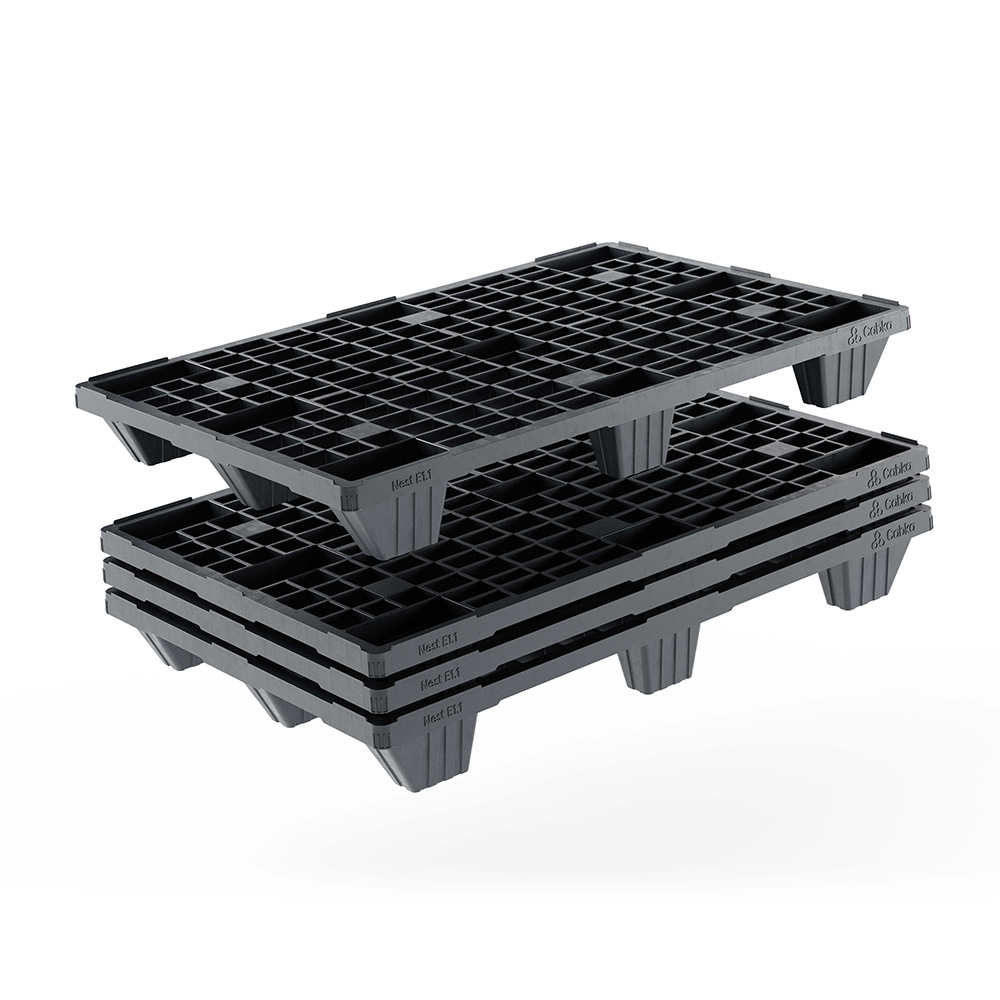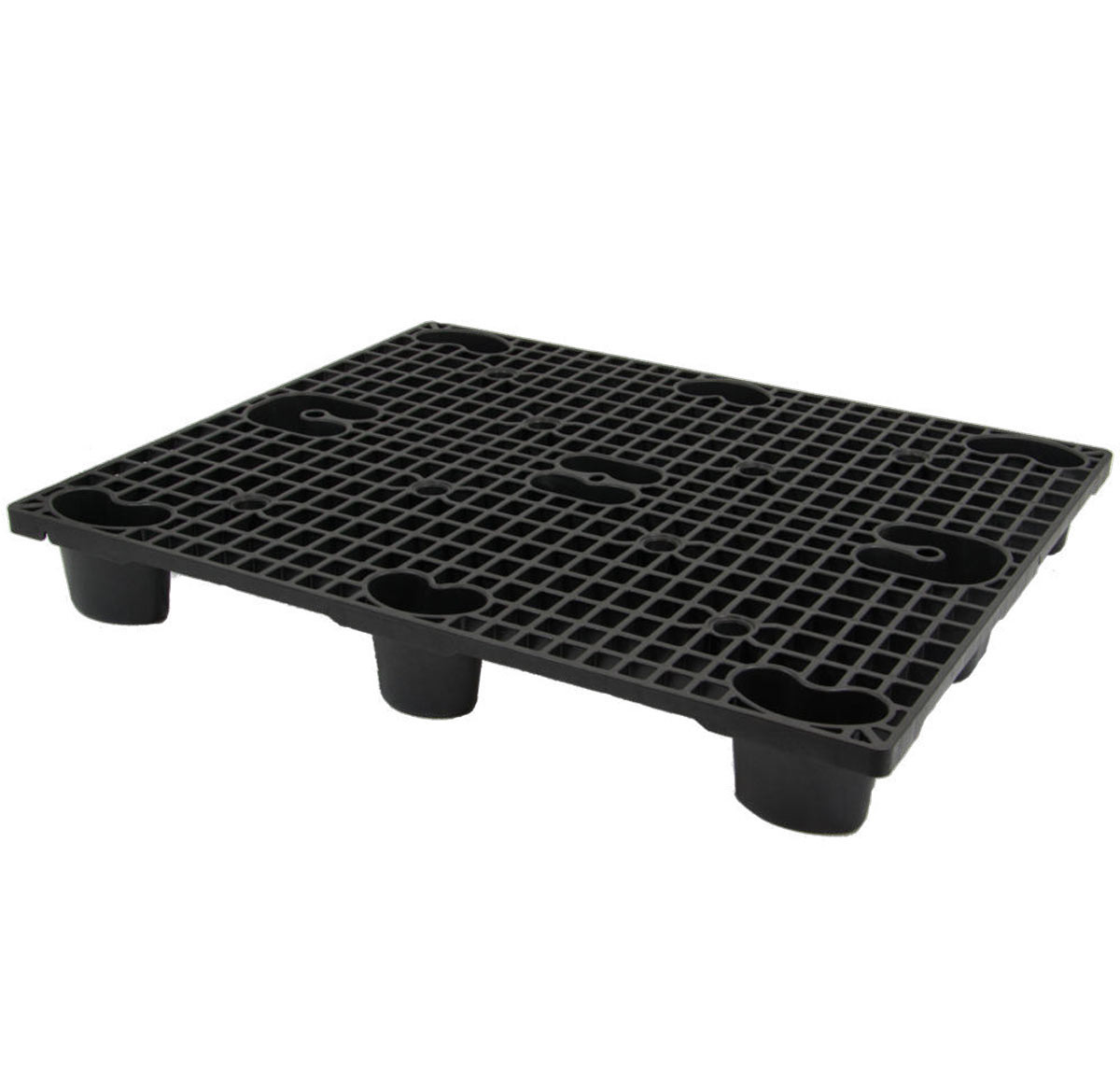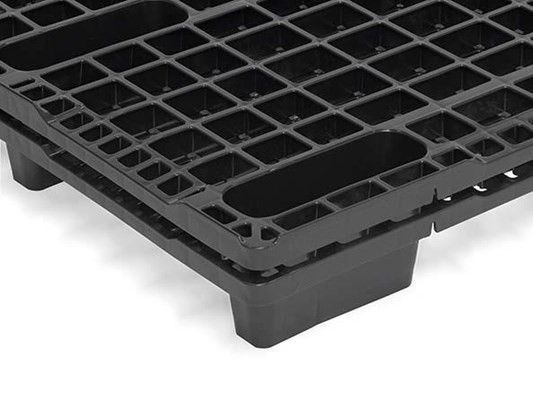Your cart is currently empty!
The definitive guide to nestable pallets
If you are involved in product manufacturing, distribution, supply chain management or logistics, you’ll likely have a keen eye on pallets.
There is a huge variety of different pallets and pallet boxes on the market, and over recent years we have seen a significant growth in the use of nestable plastic pallets, as organisations look to take advantage of the latest advancements. In addition, environmental considerations mean that perceptions about traditional wooden pallets are rightfully changing, and now recyclable plastic is considered a better way forward than wood.

So, without further ado, here is our definitive guide to nestable pallets:
The evolution of pallets
Pallets have evolved considerably since they came into existence. While examples of pallets or skids (single-deck pallets) have been around for a long time, the modern type of pallet we know today took off after the forklift truck was invented in 1915.
By the 1940s, wooden pallets and forklift trucks were integral to supply chains. Plastic pallets debuted in the 1960s and have become a popular alternative to standard wooden ones.
In the 1970s, plastic pallets became more popular in the food and agriculture industries and pharmaceuticals because they offered a more hygienic platform. By the 1990s, plastic pallets were being used worldwide in various industries. As they continue to evolve, plastic pallets are increasingly considered a viable option, offering better value and performance to users.
The different types of pallets
To the untrained eye, a pallet is a pallet. But, in manufacturing, logistics and other sectors where pallets are integral, there is great discernment over pallet type. Pallets come in many designs, sizes, and materials, and the usage or class of products being transported or stored and warehousing capabilities determine pallet suitability.
While there are a few different types of wooden pallets (block, stringer, double-face and double-wing, for example), plastic offers a much greater variety of styles and sizes.
To this end, plastic pallets are ideal for customers who require pallets produced to a range of specifications. As well as standard-size and EU-size pallets, plastic offers an extensive range of non-standard pallet sizes. This includes budget, lightweight options and reinforced models where a heavy-duty pallet is required for heavy loads, as well as display and clean room (food hygiene) models.
Various plastic pallet designs include stackable pallets, rackable pallets, export pallets, drum pallets, solid deck pallets, plastic pallet boxes and nestable pallets. Unlike wood, plastic can be moulded to any shape, hence a greater variety of styles.
What is a nestable pallet?
The clue is in the name. Nestable pallets ‘nest’ into one another. Their unique design enables them to fit inside each other, meaning they stack together more easily when empty and occupy less space.

What is the difference between nestable and stackable pallets?
The main difference between the two is in how they are stored. When empty, the feet of nestable pallets slot inside the nestable pallet underneath, which means they sit tightly together. Stackable pallets, in contrast, sit on top of one another, so they aren’t as space-efficient when empty.
Another difference is with capacity. Stackable pallets can generally carry a much heavier load, though nestable pallets also come in heavy-duty options, such as our SF 1000 H Pallet 9F. With elliptical and reinforced-shaped feet, it also has a huge dynamic capacity of 1250kg.

What are nestable pallets made from?
Typically, nestable plastic pallets are made from the same materials as other types of plastic pallets, namely high-density polyethylene (HDPE) or polypropylene (PP).
goplasticpallets.com’s nestable pallets, for example, are made from 100 per cent recycled HDPE plastic, so they can also be recycled at the end of their life.
Why use nestable plastic pallets?
Here are a few reasons why you might choose nestable pallets over other pallet types:
Save on transportation costs
Nestable pallets offer considerable space-saving in warehouses. Best of all, they provide significant savings on return journeys when empty. For example, you can typically load a 13.6m trailer with up to 1450 nestable plastic pallets (each 1200x1000mm stack will be 50/55 units), compared to just 400/450 wooden pallets (in stacks of 15/18).
This unique feature offers a huge advantage regarding transport costs and profitability.

Increase bulk storage
Bulk storage of pallets in a warehouse is much more feasible with nestable pallets. Thanks to their nesting capacity, it is possible to optimise warehouse space and, in some cases, may even enable the use of smaller premises.
Ramp up sustainability credentials
Plastic pallets made from recyclable plastic are an excellent option for companies looking to reduce their carbon footprint. Unlike wooden pallets, they don’t contribute to deforestation. Research by Deloitte shows that consumers are increasingly making conscious decisions with sustainability and the environment in mind, so opting to use recyclable plastic pallets – with a far longer working life – positively impacts sustainability credentials.
What are the additional benefits of nestable plastic pallets?
Nestable plastic pallets have several additional benefits. These include:
- less fragile
- less vulnerable to impact damage
- more hygienic and don’t absorb liquid spills or moisture
- made from contamination-free materials and have a smooth surface
- logistically efficient as they stack tightly together and save space
- economical
- lightweight
- reusable and have a long lifespan of 10-15 years
- an eco-friendly option when made from recyclable plastic
What industries use nestable pallets?
Nestable plastic pallets are popular in many sectors, including manufacturing, distribution, and retail. Because they are made from HDPE or PP, they are sturdy, resistant to wear and tear, lightweight and easy to handle. These characteristics make them highly versatile and practical for various applications.
Here’s a snapshot of some key industries using nestable plastic pallets for logistics and storage and the advantages this type of pallet brings to each of them.
Warehousing: During the pandemic, wooden pallets became short in supply. As a result, many warehouses upgraded their conventional racking systems to accommodate different pallet options. Conventional racking systems accommodate pallets on runners, with pallets sitting across the beams. Such systems exclude pallets with feet as they can slip off the framework. But decking racking beams with steel or timber makes a solid, sturdy storage platform, giving much greater flexibility over pallet choice.
With products stacking up during the pandemic, space-saving solutions became critical, and with wooden pallets in short supply, plastic pallets, especially nestable ones, offered a viable alternative.
Nestable plastic pallets come with many benefits, a key one being the entry price. Nestable pallets are comparable to the cost of a new wooden pallet and considerably cheaper than a five-runner plastic pallet.
The most significant benefit, however, comes from the stacking capabilities of nestable pallets when empty, which transforms warehouse spaces and dramatically improves transportation efficiencies. For these reasons, nestable plastic pallets are becoming more popular in warehouse operations.
Retail: Point-of-sale nestable plastic pallets are much more aesthetically appealing than wooden pallets, so they look more attractive on the shop floor. This makes them ideal for supermarkets, garden and hardware stores, and other similar retail outlets.
When empty, nestable pallets are lightweight for shop workers to handle, and they nest securely inside each other for their return to the warehouse, saving valuable storage space. They are also easy to handle and convenient, enabling regular point-of-sale rotation.
Recyclable plastic nestable pallets also bring sustainability and circularity to a retailer’s business, which is increasingly vital for consumer loyalty.
And for food, dairy and pharmaceutical retailers, plastic pallets ensure that products are transported and stored via a highly hygienic option.
Distribution and exporting: Nestable export plastic pallets bring several benefits for exporters and airfreight.
The most substantial benefit comes from their composition – the plastic itself. It means they are exempt from heat treatment regulations imposed on wooden pallets, thus removing the risk and hassle of consignments getting delayed by customs at ports.
Under the global ISPM 15 safety standard, wooden pallets and timber packaging must be heated or fumigated to kill wood-born pests and diseases. These regulations are prompting many distributors to consider using plastic pallets instead.
In addition, nestable plastic pallets are low in weight, and pallet weight is extremely important for shipping. Therefore, a lightweight plastic pallet will attract much lower shipping costs across all modes of transportation.
And, as already highlighted, plastic nestable pallets offer unique space-saving capabilities on return journeys.
How to choose the right plastic pallet for your business
With today’s global economic uncertainty, cost savings and operational efficiencies are critical business considerations. As a result, all aspects of business are under constant review, including the pallets you use!
To choose the right pallet for your business, you must consider the following:
- Cost
- Shipping weight
- Load suitability
- Compatibility with pallet trucks, jacks and forklifts
- Storage requirements
- Product life expectancy
- Environmental and operational circumstances – refrigeration, hygiene etc.
High-quality nestable plastic pallets are a gold standard in pallets and can contribute to a logistically more innovative way of working.
Please get in touch with us if you are still unsure which type of pallet (stackable or nestable) is best for your business activity. We offer the UK’s largest range of plastic pallets, pallet boxes, small containers, crates and trays. If you need help, one of our knowledgeable and friendly pallet specialists will gladly offer guidance and discuss your requirements. Call 01323 744057, email sales@goplasticpallets.com, or use our chat function at https://www.goplasticpallets.com.
